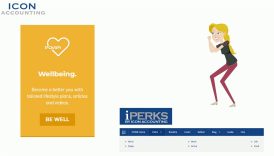The Ultimate Guide to Setting Up a Productive Home Office

Benefits of a Productive Home Office
Creating a productive home office can lead to numerous advantages that enhance both work performance and personal well-being. A well-organized space helps in:
- The Ultimate Guide to Setting Up a Productive Home Office
- Benefits of a Productive Home Office
- Importance of Setting Up a Home Office Space
- Choosing the Right Location
- Evaluating Potential Spaces
- Designing a Functional Layout
- Essential Furniture and Equipment
- Ergonomic Chair and Desk
- Reliable Technology Setup
- Organizing Your Home Office
- Decluttering and Storage Solutions
- Personalizing with Decor
- Establishing a Productive Routine
- Setting Work Hours
- Avoiding Distractions
- Effective Time Management
- Creating a Daily Schedule
- Prioritizing Tasks
- Maximizing Efficiency
- Utilizing Productivity Tools
- Implementing Break Strategies
- Maintaining Work-Life Balance
- Setting Boundaries
- Taking Time for Self-care
- Staying Connected
- Communication Strategies
- Virtual Team Collaboration
- Troubleshooting Common Challenges
- Dealing with Technical Issues
- Overcoming Isolation
- Sustainable Practices
- Energy-saving Tips
- Eco-friendly Office Supplies
- XII. Improving Health and Well-being
- Incorporating Movement Breaks
- Practicing Mindfulness
- XIII. Setting Goals and Tracking Progress
- Establishing Clear Objectives
- Monitoring Performance
- XIV. Seeking Professional Support
- Virtual Assistance Services
- Online Networking Opportunities
- XV. Conclusion
- Recap of Key Points
- Encouragement for Building a Productive Home Office
- Boosting Focus: The right environment minimizes distractions, allowing for deeper concentration on tasks.
- Improving Comfort: Ergonomic furniture reduces physical strain, making long hours more bearable.
- Encouraging Flexibility: Having a home office enables a balance between professional and personal tasks throughout the day.
Imagine being able to swap out your work attire for something comfortable while still maintaining productivity!
Importance of Setting Up a Home Office Space
Setting up a home office is not just about having a desk and a chair; it’s about creating a dedicated workspace that fosters creativity and efficiency. A designated area can:
- Establish Routine: Having a specific work zone signals your brain that it’s time to focus.
- Enhance Professionalism: A tidy workspace improves the impression you give in virtual meetings.
- Support Boundaries: Clearly separating work from home life helps prevent burnout.
Think of it as creating a sanctuary for your career ambitions right in your home.
Choosing the Right Location
Evaluating Potential Spaces
Once you’ve recognized the importance of a home office, it’s time to evaluate potential spaces. Consider areas that offer both privacy and comfort. Here are some factors to assess:
- Natural Light: A well-lit space can boost your mood and energy.
- Noise Levels: Choose a quiet area to minimize distractions.
- Accessibility: Make sure your workspace is easily accessible for quick breaks.
When I transformed a corner of my living room into an office, the sunlight streaming in made a world of difference in my focus and creativity!
Designing a Functional Layout
After picking the ideal location, it’s crucial to design a functional layout that caters to your workflow. Think about:
- Desk Positioning: Face your desk toward a window for light or a wall for clearer focus.
- Storage Solutions: Utilize shelves or cabinets to keep essential items within reach while decluttering your desk.
- Comfort: Ensure everything from your chair height to monitor distance promotes ergonomic handling.
Creating a layout that suits your personal needs can help transform that small corner into a powerhouse of productivity!
Essential Furniture and Equipment
Ergonomic Chair and Desk
Now that you’ve mapped out your space, investing in quality furniture is essential for sustaining productivity. An ergonomic chair and desk are the foundation of a comfortable workspace that promotes healthy posture. Consider these points:
- Adjustability: Look for chairs and desks that can be altered to fit your height and body type. This customization can reduce strain over time.
- Support: A chair with lumbar support helps keep your spine aligned during long work sessions.
- Surface Space: Ensure your desk provides ample space for your computer, paperwork, and any other tools you need.
When I switched to an ergonomic setup, I noticed a remarkable decrease in my back pain, allowing me to work longer and more efficiently.
Reliable Technology Setup
Alongside furniture, having a reliable technology setup is crucial for maintaining productivity. Your tech tools should support your work seamlessly. Here’s what to prioritize:
- Computer and Accessories: Invest in a good-quality laptop or desktop, along with accessories like a mechanical keyboard and a responsive mouse.
- High-Speed Internet: A stable internet connection is essential for video calls and accessing online resources.
- Backup Solutions: Consider an external hard drive or cloud storage to protect your work and data.
The moment I upgraded my Wi-Fi and switched to a faster computer, my workflow improved, allowing me to tackle projects with ease!
Organizing Your Home Office
Decluttering and Storage Solutions
With your essential furniture and reliable technology in place, the next step is organizing your home office. Decluttering is key to fostering a focused environment. Start by implementing these strategies:
- Sort and Categorize: Go through your items and categorize them into groups: keep, discard, and donate.
- Storage Solutions: Utilize shelving, filing cabinets, or drawer organizers to keep everything accessible yet tidy.
- Limit Surface Clutter: Only keep daily essentials on your desk to maintain a clean workspace.
When I decluttered my office last month, I was shocked at how much clearer my mind felt, instantly boosting my productivity!
Personalizing with Decor
After creating a neat and functional space, it’s time to add some personality! Personalizing your home office not only makes it more inviting but also inspires creativity. Consider these ideas:
- Artwork and Prints: Hang pieces that motivate or resonate with you; this could include inspirational quotes or your favorite artwork.
- Plants: Incorporating greenery, like succulents or ferns, can enhance air quality and add a lively touch to your workspace.
- Personal Mementos: Display items that hold sentimental value, such as photos or souvenirs, to create a warm atmosphere.
I found that adding a few framed photos and a plant transformed my office from purely functional to a space I actually enjoy spending time in!
Establishing a Productive Routine
Setting Work Hours
Now that your home office is organized and personalized, the next step is to establish a productive routine. Setting clear work hours helps compartmentalize your day. Here’s how to lay down a solid schedule:
- Choose Consistent Hours: Aim for a regular start and finish time to create a sense of normalcy.
- Schedule Breaks: Plan short breaks to recharge, which can help maintain your focus throughout the day.
- Communicate Your Schedule: Let others know your work hours to minimize interruptions.
When I began treating my work-from-home hours like a traditional job, I found it significantly improved my productivity and reduced work-life blend issues.
Avoiding Distractions
Alongside fixed work hours, actively avoiding distractions is crucial to preserving focus. Here are some effective strategies:
- Create a Distraction-Free Zone: Position your desk away from high-traffic areas.
- Limit Social Media Use: Use website blockers during work hours to reduce temptations.
- Establish “Do Not Disturb” Time: Use signals, like headphones, to convey to others that you’re in a focused work phase.
By eliminating distractions, I found that I not only completed tasks quicker but also produced higher-quality work. Implementing these strategies can truly transform your productivity!
Effective Time Management
Creating a Daily Schedule
With a structured routine in place, effective time management becomes essential for maximizing your productivity. Start your day by creating a daily schedule that outlines your tasks. Here’s how to get started:
- Block Specific Time Slots: Allocate dedicated time for each task, allowing for focus and discipline.
- Incorporate Transition Periods: Include short breaks between tasks to clear your mind and maintain energy.
- Use Digital Tools: Consider apps like Google Calendar or Trello to visualize your day.
When I began scheduling my tasks, I discovered that having a clear plan helped me stay on track and hit my deadlines consistently!
Prioritizing Tasks
Creating a daily schedule necessitates the skill of prioritizing tasks, ensuring that the most critical items are tackled first. Here are some strategies for prioritization:
- Use the Eisenhower Matrix: Categorize tasks based on urgency and importance to identify what must be done immediately and what can wait.
- Set Clear Goals: Define daily objectives to focus your efforts on results.
- Review and Adjust: Take a few minutes at the end of each day to review what you accomplished and adjust the following day’s priorities accordingly.
Through prioritization, I’ve learned to focus on high-impact activities first, which has made a big difference in achieving my long-term goals!
Maximizing Efficiency
Utilizing Productivity Tools
Having established effective time management practices, the next step is to focus on maximizing efficiency through productivity tools. Incorporating various tools can streamline your tasks and boost output. Consider using:
- Task Management Apps: Tools like Asana or Todoist allow you to easily track and manage your to-do list.
- Time Tracking Software: Programs like Toggl help analyze how you spend your time, enabling you to make informed adjustments.
- Note-taking Applications: Apps such as Evernote can help gather ideas, meeting notes, and important documents in one place.
When I started using a task management app, I was amazed at how much more organized and focused my workdays became!
Implementing Break Strategies
While maximizing efficiency is key, it’s equally important to implement effective break strategies. Regular breaks enhance focus and recharge your mind. Here are some practical approaches:
- The Pomodoro Technique: Work in focused bursts of 25 minutes, followed by a 5-minute break. This method can maintain high productivity levels.
- Stretch and Move: Use break time for quick stretches or short walks to revitalize your body.
- Mindfulness Moments: Take a few moments to practice breathing exercises or meditation, which can help to clear your mind.
By introducing structured breaks into my routine, I found my productivity had skyrocketed, allowing me to tackle challenges with a fresh perspective each time!
Maintaining Work-Life Balance
Setting Boundaries
As you fine-tune your productivity, it’s equally important to maintain a healthy work-life balance. Setting boundaries between your professional tasks and personal life is crucial for mental well-being. Here’s how to create those limits:
- Define Workspace Limits: Clearly mark your work area, and try not to conduct work outside of this designated spot.
- Communicate Availability: Let family and friends know your working hours to minimize interruptions.
- Turn Off Notifications: After work hours, disable work-related alerts to help you disconnect.
When I began shutting down my work email after hours, I noticed a significant decrease in stress and a remarkable improvement in my personal life quality.
Taking Time for Self-care
Alongside boundaries, prioritizing self-care is essential for sustaining your productivity and energy levels. Making time for yourself can rejuvenate your focus and creativity. Consider implementing these self-care practices:
- Schedule Relaxation: Dedicate time each day for activities that help you unwind, such as reading, painting, or enjoying a hobby.
- Exercise Regularly: Physical activity can relieve stress and enhance mood, so aim for at least 30 minutes a day.
- Practice Mindfulness: Incorporating meditation or simple breathing exercises can keep you centered and reduce anxiety.
By committing to self-care, I’ve discovered that both my productivity and happiness have flourished, proving that a balanced lifestyle truly pays off!
Staying Connected
Communication Strategies
As remote work becomes more prevalent, staying connected with colleagues is vital for maintaining teamwork and collaboration. Effective communication strategies can strengthen relationships and keep everyone on the same page. Here are some tips:
- Regular Check-Ins: Schedule weekly or bi-weekly meetings to touch base with your team, discussing progress and challenges.
- Use Collaborative Tools: Platforms like Slack or Microsoft Teams facilitate instant messaging, fostering quick communication.
- Be Clear and Concise: When conveying ideas or updates, aim for clarity to prevent misunderstandings.
I’ve found that initiating casual catch-ups over coffee via video chat has significantly enriched team dynamics and morale.
Virtual Team Collaboration
In addition to strong communication, leveraging tools designed for virtual collaboration is essential. Here are some effective strategies to enhance teamwork from afar:
- Project Management Software: Tools like Trello or Asana help track projects and responsibilities, ensuring everyone knows who is doing what.
- Video Conferencing: Use Zoom or Google Meet for face-to-face interactions, which can replicate in-person meetings and boost engagement.
- Sharing Resources: Cloud-based drives like Google Drive or Dropbox allow easy access and sharing of documents and files among team members.
By implementing these collaborative tools in my team, I’ve witnessed a remarkable improvement in efficiency and unity, proving that distance doesn’t have to diminish connection!
Troubleshooting Common Challenges
Dealing with Technical Issues
Despite the advantages of a home office, technical issues can often pop up and disrupt your workflow. Addressing these challenges proactively is crucial. Here are some strategies:
- Regular Updates: Keep your software and devices updated to prevent glitches.
- Backup Solutions: Have a backup internet connection, such as a mobile hot spot, ready in case your primary connection fails.
- Know Your Resources: Familiarize yourself with IT support contacts to quickly resolve any issues.
When my internet went down during a critical project, having a mobile hot spot saved the day, allowing me to continue working without significant delays!
Overcoming Isolation
Working from home can sometimes lead to feelings of isolation, impacting both mental health and motivation. To overcome this, consider implementing these techniques:
- Schedule Social Interactions: Make it a point to connect with colleagues for casual chats or virtual coffee breaks.
- Join Online Communities: Platforms like LinkedIn or specific forums can provide opportunities to engage with others in your field.
- Participate in Virtual Events: Look for webinars or online workshops related to your work to build connections and learn.
Personally, I’ve found that taking part in online workshops not only helped alleviate my feelings of isolation but also enriched my professional knowledge and network. By tackling these common challenges, you can create a more enjoyable and productive remote working experience!
Sustainable Practices
Energy-saving Tips
As you refine your home office setup, incorporating sustainable practices can contribute positively to the environment and reduce your energy bills. Here are some simple energy-saving tips:
- Opt for Energy-efficient Lighting: Switch to LED bulbs, which use significantly less energy and last longer than traditional bulbs.
- Utilize Natural Light: During the day, rely on sunlight as much as possible to brighten your workspace.
- Unplug Devices: Turn off and unplug electronics when not in use to minimize phantom energy drain.
By switching to energy-efficient solutions, I was able to cut my utility bill and contribute to a greener planet, which felt great!
Eco-friendly Office Supplies
In addition to energy-saving methods, using eco-friendly office supplies can further your commitment to sustainability. Here are some options to consider:
- Recycled Paper Products: Choose products made from recycled materials, reducing deforestation and waste.
- Biodegradable Accessories: Incorporate biodegradable items like pens and sticky notes that won’t harm the environment.
- Reusable Containers: Opt for refillable inks and binders instead of disposable items.
I’ve transitioned to mostly biodegradable supplies in my office, and it’s satisfying to know I’m reducing my environmental footprint while still being productive. Embracing sustainability not only enhances your workspace but also contributes to a healthier planet for future generations!
XII. Improving Health and Well-being
Incorporating Movement Breaks
As you refine your home office environment with sustainable practices, it’s essential to focus on your health and well-being. One effective way to do this is by incorporating movement breaks into your daily routine. Here are some ideas:
- Set a Timer: Aim to stand up and stretch every 30 to 60 minutes to keep your body energized.
- Quick Workouts: Engage in five-minute routines, like jumping jacks or yoga stretches, to get your blood flowing.
- Walking Meetings: If possible, take calls while walking around your space or outside.
Since I started taking short movement breaks, I’ve felt more alert and focused, making a noticeable difference in my work quality!
Practicing Mindfulness
In addition to physical movement, practicing mindfulness can greatly enhance your mental well-being. Consider integrating mindfulness techniques into your workday:
- Mindful Breathing: Take a few minutes to focus on your breath, helping to ground yourself and reduce stress.
- Gratitude Journaling: Write down things you’re grateful for each day to cultivate a positive mindset.
- Guided Meditations: Utilize apps like Headspace or Calm for short meditation sessions during breaks.
By dedicating time to mindfulness practices, I’ve found my overall stress levels decreasing, allowing me to approach challenges with a clearer, more focused mindset. Prioritizing health and well-being can transform your home office experience!
XIII. Setting Goals and Tracking Progress
Establishing Clear Objectives
Now that you’re focused on improving health and well-being, it’s time to shift your attention to setting goals and tracking progress. Establishing clear objectives serves as a roadmap for your work. Here’s how to get started:
- Define SMART Goals: Ensure your objectives are Specific, Measurable, Achievable, Relevant, and Time-bound.
- Break Down Tasks: Divide larger goals into smaller, manageable milestones to prevent feeling overwhelmed.
- Visualize Success: Use vision boards or written lists to keep your goals front and center.
Since I started setting clear objectives, I’ve been able to monitor my achievements more effectively and stay motivated.
Monitoring Performance
Once you have clear goals, monitoring your performance becomes vital for achieving success. Here are some effective strategies:
- Regular Reviews: Set aside time weekly or monthly to assess your progress against your goals.
- Use Tracking Tools: Consider apps or spreadsheets to log accomplishments and visualize your progress.
- Gather Feedback: Engage with peers or mentors for insights and constructive criticism.
By keeping a close eye on my performance, I’ve gained valuable insights into my work habits, which has helped me adjust goals as needed and continue progressing toward my aspirations. Consistent goal setting and tracking can really propel your success in a home office setting!
XIV. Seeking Professional Support
Virtual Assistance Services
As you set goals and track your progress, seeking professional support can enhance your productivity significantly. One of the most valuable resources available is virtual assistance services. They can help with:
- Administrative Tasks: Virtual assistants can manage your emails, scheduling, and paperwork, freeing up your time for more critical work.
- Special Projects: Need help with a specific project? A virtual assistant with the right expertise can help you efficiently execute tasks.
- Research and Data Entry: Delegate time-consuming tasks, allowing you to focus on high-priority work.
After hiring a virtual assistant, I found that I could dedicate more time to strategic initiatives rather than getting bogged down with daily administrative duties.
Online Networking Opportunities
In addition to virtual assistance, engaging in online networking opportunities can be incredibly beneficial for your career. Here’s how to make the most of networking in a virtual environment:
- Join Professional Groups: Engage in LinkedIn groups or industry-specific forums to connect with like-minded professionals.
- Attend Webinars and Conferences: Participate in virtual events to expand your knowledge and meet potential collaborators.
- Schedule Informational Interviews: Reach out to industry leaders for informal chats to gain insights and grow your professional circle.
By actively participating in online networking, I’ve forged valuable connections and uncovered exciting collaborative projects that have enriched my professional journey. Seeking support, whether through virtual assistance or networking, can greatly enhance your work experience and lead to new opportunities!
XV. Conclusion
Recap of Key Points
In conclusion, creating a productive home office is a multifaceted endeavor that involves various elements we’ve discussed. To recap, remember to:
- Choose the Right Space: Select a location that minimizes distractions.
- Invest in Ergonomics: Prioritize an ergonomic chair and desk setup.
- Establish Boundaries: Set clear work hours and maintain a work-life balance.
- Utilize Tools: Leverage productivity tools and technologies.
- Seek Support: Don’t hesitate to use virtual assistance and networking opportunities.
By applying these strategies, I’ve seen my own productivity flourish, and you can too!
Encouragement for Building a Productive Home Office
Building a productive home office is an ongoing journey, and embrace it with enthusiasm! Remember that every small change can lead to significant improvements in your work life.
- Stay Adaptable: Be open to modifying your setup as you learn what works best.
- Celebrate Progress: Acknowledge your achievements, no matter how minor, to stay motivated.
As you embark on this journey, let your home office reflect your personal style and professional aspirations. With dedication and creativity, you’ll create a space that not only enhances productivity but also supports your overall well-being!





